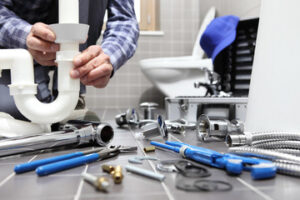iPhones are among the most popular electronic devices in the world. They are extremely useful and convenient, but they can also be damaged for various reasons.
It is important to understand the options available for repairing your Apple device. These include official repair centers, third-party repair shops, and DIY repairs. It is also crucial to understand how different repair options affect your warranty and insurance coverage. Contact Chicago iPhone Repair now!

Cracked or damaged screens are a common repair request for iPhone owners. The problem is usually caused by dropping the device or accidentally bumping it against something hard.
Apple has a number of in-store and online options for getting an iPhone screen repaired. They use genuine replacement parts to ensure compatibility and maintain the quality of the device. The cost of repairs is based on the model and generation of the iPhone as well as the complexity of the screen damage. The latest models have more advanced displays and are thus more expensive to replace.
Some repair services provide cost savings by using third-party parts instead of the more expensive official Apple parts. This can save money and also reduce repair times. However, it’s important to compare these costs against the cost of a new or refurbished device.
In addition to comparing repair costs, it’s also worth exploring warranty and insurance implications. If your iPhone is still under the initial one-year warranty or has AppleCare+ coverage, this might help cover the repair cost. Similarly, your homeowners or renters insurance policy might provide coverage for accidental damage.
If your iPhone isn’t covered by any warranty or protection plan and you have some technical skills, you may be able to perform the repair yourself. This is typically a more cost-effective option but does require some knowledge of electronics repair and could void your warranty if you make any mistakes. The website iFixit offers detailed step-by-step guides for fixing many different types of electronic devices and also sells the replacement parts you’ll need. Staples also has repair services that aren’t related to Apple and can be a viable option for those without access to an Apple store or other authorized repair shop.
Battery Replacement
Lithium-ion batteries degrade over time, and an iPhone’s battery can start losing its ability to hold a charge or provide enough power for essential functions. You can check if it’s time for a new battery by going to Settings > Battery > Battery Health & Charging, and looking at your phone’s maximum capacity. You may also see a small notice in the top right of your screen if the battery is ready for replacement.
If you have AppleCare or are covered under a warranty, an iPhone battery replacement costs around $89 at Apple Stores and through authorised repairs providers, though that cost can vary depending on the provider. Alternatively, you can bring your device to a third-party repair service. However, you should know that some repair shops may not use genuine Apple parts, and you could be exposing your iPhone to malware and other security risks. It’s important to back up your data and disable Find My iPhone before beginning the replacement process, as well as consider shipping fees and functional requirements when choosing a repair provider.
It’s possible to replace an iPhone battery yourself, but this isn’t recommended unless you’re familiar with electronics and have access to the proper tools. You can find in-depth explainers of how to do it on sites like iFixit, which offer detailed guides that include photos and a disassembly guide. If you go the DIY route, make sure to follow a step-by-step guide and carefully remove your battery. It’s also important to understand that an improperly handled or improperly installed replacement can cause a number of problems, including damage to the display or home button. In addition, attempting a battery replacement without the proper tools can void your warranty.
Water Damage
While iPhones are incredibly durable devices, they can still suffer damage over time. A common problem is water damage, which can cause the device to stop working. This is usually the result of a cracked back glass that exposes internal components to water or dirt. If left untreated, it can lead to a number of issues, such as apps that crash or don’t charge.
The good news is that many Apple repair shops offer a range of services that can help to fix this problem. These include screen repairs, battery replacements, and charging port repairs. The cost of these services can vary depending on the type of damage, and the model of the phone. Some of these repair services may also be covered by insurance or a warranty.
When deciding whether to repair or replace your iPhone, you should assess the level of damage and consider the price of a new phone. If the damage is severe, it might be worth replacing the phone. However, if there is only minor damage, it might be more cost-effective to repair the device.
In general, it is important to use a protective case and screen protector on your iPhone, as this will help to prevent the need for repairs in the future. You should also keep your software updated regularly, as this can help to fix some glitches and improve performance. Additionally, you should try to avoid exposing your phone to extreme temperatures, as this can also cause problems. If you are unsure about what steps to take, contact a professional technician for advice and assistance. They can provide you with the best possible solution to your iPhone problem.
Software Issues
The iPhone is one of the most popular smartphones in the world, but it’s not immune to damage and software issues. If you’re experiencing an issue with your iPhone, don’t panic. Whether it’s a cracked screen or battery replacement, you can repair your phone without breaking the bank. However, before you decide to replace your iPhone, make sure to assess how much internal and external damage there is.
If your iPhone’s touchscreen is erratic or unresponsive, it may be due to an app-related problem. You can try restarting your device, reinstalling the app, or clearing its cache. If the problem persists, you can also contact your repair shop for help.
Another common issue is the quick drain of your iPhone’s battery. To prevent this, you can close unnecessary apps, keep your iPhone out of hot environments, and update to the latest iOS version. Lastly, if your iPhone’s alarm is not working properly, you can try restarting the device or turning off its Wi-Fi or Bluetooth connections.
The latest version of iOS has many new features that are aimed at improving user experience. However, these changes can have a negative impact on the phone repair industry, especially for technicians who are not familiar with the new technology. To avoid losing clients, you should invest in professional training and certification programs to learn the latest Apple technologies and iPhone repair techniques. You can also upgrade your diagnostic tools to ensure that you are able to identify and fix any problems caused by iOS 18. This will help you stay competitive in the tech industry and improve customer satisfaction.
Old or Outdated Phone
Depending on how old your phone is and the extent of its damage, it may not be worth repairing. Newer iPhones offer more features, and the cumulative cost of a repair might be better spent on a replacement.
Another factor is how much you value your current device. Some people feel attached to their phones and prefer to keep them for sentimental reasons. However, if your phone is several years old and struggling to stay compatible with new apps, it might be time for an upgrade.
Finally, if you have a warranty or insurance plan covering your current device, it may make more financial sense to use that coverage to replace the damaged unit rather than paying for the repairs yourself. Some warranties also cover accidental damages, such as cracked screens, and these may subsidize the costs of repairs.
Apple typically provides support for discontinued iPhones with software updates and hardware repairs for up to five to seven years after a model has been retired from the market. However, after this period, the devices are classified as vintage or obsolete, and the company may limit or cease its repairs for these models.
It’s possible to repair older or outdated smartphones through third-party sources, such as iFixit. However, this process is more likely to void your remaining warranty and could possibly cause further issues for the device. Moreover, because of Apple’s “parts pairing” policies, your iPhone may disable some features if it detects that certain parts have been replaced outside the company’s authorized channels. This includes battery health and True Tone functionality. You may be able to fix these issues by restoring your iPhone using iTunes, but this process may not work for all models.

